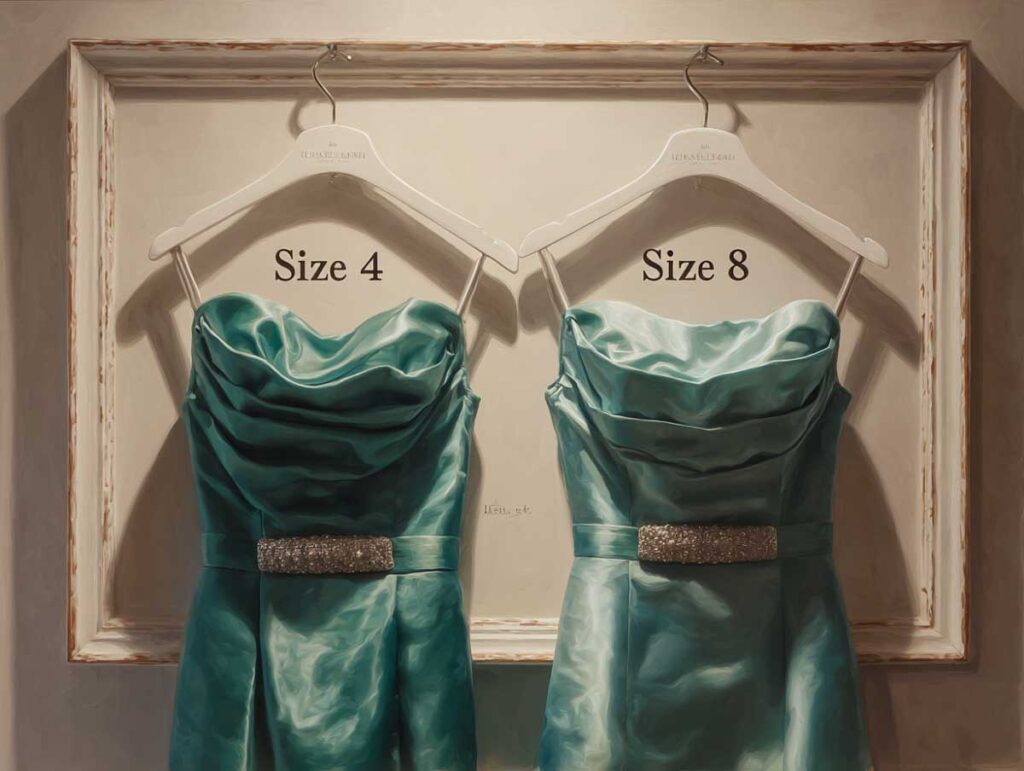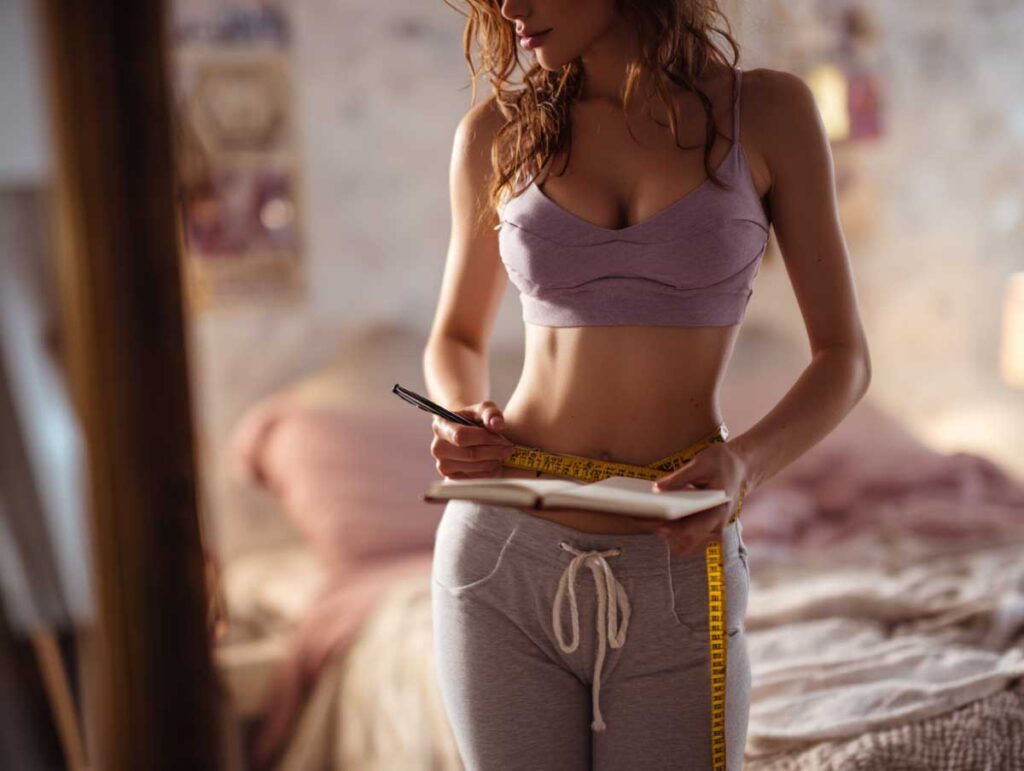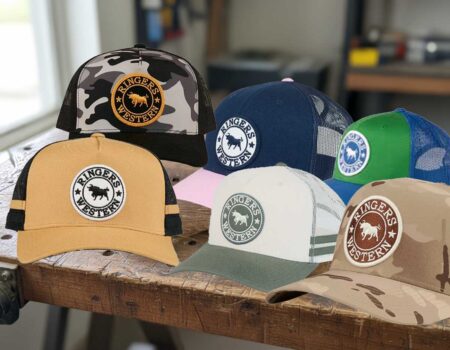I cannot tell you how many times I have left a mall holding two pairs of jeans in the “same” size… that were definitely not the same size. One zipped easily. The other stopped mid-thigh like it was trying to protect itself from me.
If you’ve ever had that moment where a size 6 fits in one store and you can’t even breathe in a 10 somewhere else, you’re not losing your mind. You didn’t gain five pounds between the food court and the fitting room. What’s happening is part history, part marketing, and part fabric science.
Today, I want to break down why women’s clothing sizes shift so much between brands, how I learned to stop trusting the number on the tag, and the system I use to actually get clothes that fit without a dressing-room meltdown.
Ready to find your true size across stores?
If you’ve ever wondered, “What is my actual size in 10 popular stores?” — you’re going to love our brand-by-brand size comparison. It gives you the real scoop on what actually fits (and what doesn’t) so you can skip the dressing room rollercoaster.Check out the full breakdown here: What Is My Actual Size In 10 Popular Stores?
The Short Answer
There’s no universal sizing standard in the U.S., brands design for different body shapes, and fabrics plus patterns can change the fit completely. The number on the tag is just a rough suggestion.
But the long answer is way more interesting…
A Little History: We Lost Standard Sizing

Once upon a time, there was an attempt to make clothing sizes consistent. In the 1940s, the U.S. government actually funded a massive study to measure thousands of women and create a standard. Problem was, it was mostly white, rural women in the study, so the ‘standard’ didn’t fit the real diversity of bodies. Retailers eventually dropped it.
Today, the ASTM publishes voluntary size tables, but they’re more like guidelines. Brands can use them, ignore them, or modify them completely. Europe has EN 13402, which uses actual measurements on the label, but even there, fashion retailers skip it more often than not.
Brands Have Their Own Fit DNA
When I first started paying attention, I noticed each brand had its own “block”, the base body pattern they start from. That block depends on their target customer.
- Petite-friendly brands make shorter rises and smaller armholes.
- Tall lines adjust inseam and knee placement.
- Curvy cuts add room at the hips and thighs while keeping the waist smaller.
These are deliberate design choices, not mistakes. It’s why a size 8 at Ann Taylor Loft feels roomy while a size 8 at Zara feels like it was made for my teenage niece.
Not sure what dress size to grab?
Pop your bust, waist, and hip measurements into our Dress Size Calculator and let it do the work. In seconds, you’ll see your size in US, UK, EU, and more, no guessing, no frustration, just a clear answer before you shop.
Vanity Sizing is a Marketing Tool
This one still gets me. Some brands quietly increase the actual measurements of a size over time so you can fit into a smaller number. It’s called vanity sizing, and it’s pure psychology.
Case in point: I bought a size 4 skirt at J.Crew last year that measures the same as an 8 I bought from them in college. I haven’t magically shrunk. They’ve just shifted the goalposts. And it works. Who doesn’t love seeing a smaller size on the tag?
Trends and Categories Change the Fit
Not every size change is a conspiracy. Some of it is fashion.
- Oversized sweaters: intentionally roomy, so you might size down.
- Rigid denim: no stretch, so you might size up.
- Juniors sizing: cut slimmer through hips and bust than women’s sizing.
The same brand can make you a 6 in wide-leg pants and an 8 in pencil skirts.
Manufacturing Tolerances are Real

Even two items with the same style code can fit differently. Cutting multiple layers of fabric at once means the top pieces may be slightly smaller than the bottom. Different dye lots, washes, and sewing lines all add up to minor fit shifts.
I once ordered two of the “same” Madewell jeans online because I wanted a backup pair. One fit perfectly, the other was so tight I thought maybe I had grabbed the wrong label. Nope. Same size, same style.
The Body Data Behind the Madness
Modern sizing uses data from body scan surveys like SizeUSA and CAESAR, but those datasets are just starting points. Brands interpret them differently based on their customer profile.
Men’s sizing drifts less because it’s often labeled in actual measurements (like a 34-inch waist). Women’s sizing is coded into numbers, 2, 4, 6, that can mean wildly different things depending on the brand.
How Online Shopping Changed the Game
E-commerce has made sizing inconsistencies even more noticeable. Returns are high in apparel, and “fit” is the number one reason. Retailers know this, so some have leaned into forgiving fits, more stretch, or “one size fits most” gimmicks.
We’ve also created the “bracketing” habit: ordering two or three sizes, keeping one, returning the rest. Brands are trying to cut returns with size tools like Fit Finder or body-scan apps, but adoption is spotty and accuracy varies.
Fabric and Pattern 101 for Better Fit
You don’t have to be a patternmaker to make smarter choices. Just know these basics:
- Stretch percentage: 2-3% elastane can mean you can size down comfortably.
- Ease: movement ease (comfort room), design ease (style fullness), and negative ease (stretch garments smaller than the body).
- Key measurements: in jeans, waist, hip, and rise matter more than the tag size. In tops, shoulder width and armhole depth often make or break comfort.
My Step-by-Step Fit Plan

Here’s the system I use to avoid playing dressing-room roulette:
1. Measure yourself once and write it down
Bust, underbust, waist, high hip, full hip, thigh, shoulder, inseam. I keep mine in my phone’s notes.
2. Compare to the brand’s size chart
Always start with their chart. If they give garment measurements (like waist flat, hip, rise), even better.
3. Read reviews and look at photos
I filter by reviewers close to my height and body type. I look for notes on rise, stretch, and whether an item runs big or small.
4. Use returns smartly
If returns are free, order two sizes when trying a new brand. Keep the better fit.
5. Know your brand patterns
I size down at LOFT, size up at Zara, and stay true at Madewell. It saves me guesswork.
6. Tailor when it’s worth it
A $15 waist nip or hem can make something look custom-made. I’ve done this with jeans, blazers, and even a couple of off-the-rack dresses.
Real-World Example
Last month, I needed black work pants. Here’s how my “size” looked across five brands:
- J.Crew: Size 2 fit perfectly in the waist.
- Zara: Needed an 8 to breathe.
- Madewell: Size 4 sat comfortably, no gap.
- H&M: Size 6, but snug in the thigh.
- Banana Republic: Size 2 in one style, 4 in another.
If I had just grabbed my “usual size,” I’d still be in the fitting room wondering why my lunch ruined my week.
Content Gaps I See in Other Posts
When I researched this topic before writing, I noticed a lot of articles miss:
- Practical measurement advice for non-sewers.
- How fabric content changes fit instantly.
- The emotional side of vanity sizing and how it affects self-image.
- Strategies for using online reviews as sizing clues.
So I made sure to fill those here.
Quick Checklist for Your Own Sizing Strategy

- ✅ Know your measurements.
- ✅ Keep a personal brand fit cheat sheet.
- ✅ Read reviews, not just product descriptions.
- ✅ Watch fabric content for stretch or shrinkage.
- ✅ Use returns strategically.
- ✅ Don’t take the tag number personally.
FAQ
Why do brands use different size charts?
There’s no legal standard, so each brand sets their own fit.
Will sizing ever be standardized?
Unlikely in fashion retail, since brands use sizing as part of their identity and marketing.
Does vanity sizing really work on shoppers?
Yes. Research shows people are more likely to buy when the tag number is smaller than expected.
Your Turn
Now that you know why your size changes so much from store to store, try this measurement-plus-brand-cheat-sheet method on your next shopping trip. Pay attention to the patterns, write them down, and watch how much faster you find things that fit.
When you test it, come back here and drop your results in the comments. I’d love to hear your first run.





